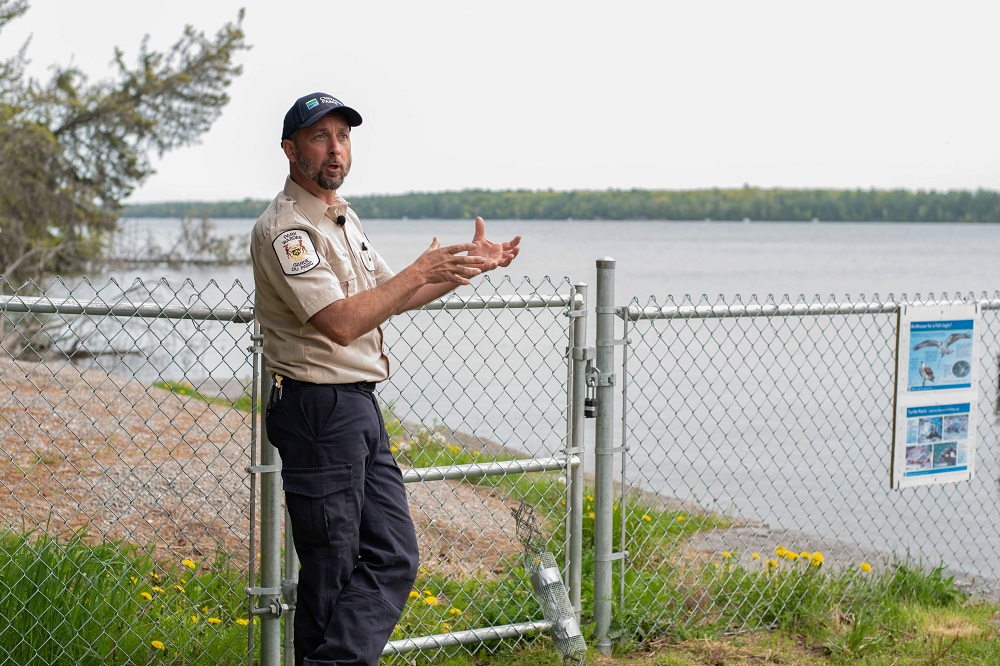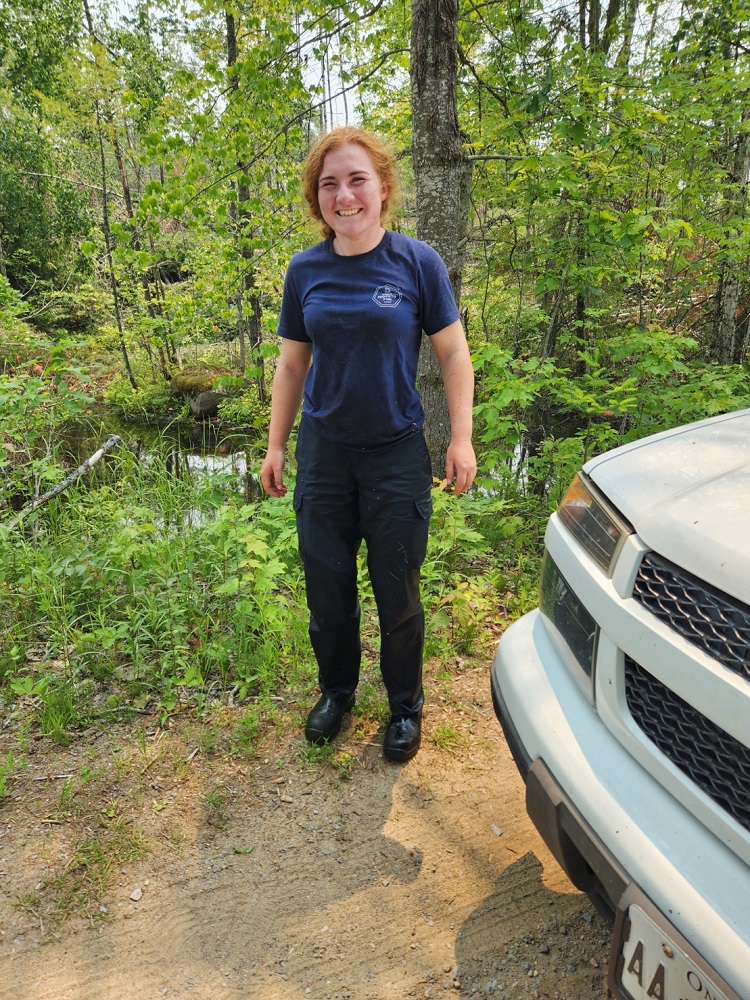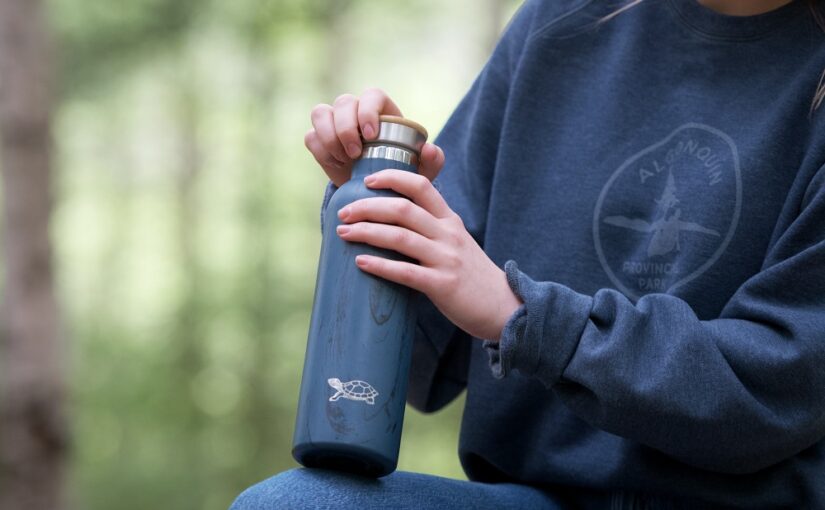Over the years, Ontario Parks staff have created many blogs about turtles, their significance to the Ontario landscape, and why it’s important that we protect and support them.
You may even be familiar with our Turtle Protection Project! With seven of the eight turtle species found in Ontario being species-at-risk under the Ontario Endangered Species Act, 2007, we like to give them all the support and attention we can.
Well, today’s post is all about this season’s turtle protection efforts in our Southeast Zone, including a new project that was started this year…
Introducing Team Turtle!
You might be wondering:
Who is Team Turtle and what did they do?
Team Turtle is a new project led by a team of Ontario Parks biologists and summer students. Their job? Research and protect turtles in the Southeast Zone.
Thanks to funding from our Turtle Protection Fund (Ontario Parks merchandise and philanthropy donations) and from the Ontario Parks Science Strategy, it was possible to have dedicated staff to conduct this research.

Katie Clapham, an assistant biologist, led the project with a team of students from Bon Echo Provincial Park, Sibbald Point Provincial Park, Emily Provincial Park, Charleston Lake Provincial Park, and Balsam Lake Provincial Park.
Team Turtle’s mission was simple: look for turtles within parks, record their locations, identify turtle hotspots, and protect any turtle nests encountered.
This work helps us better protect turtle habitat and nesting sites within provincial parks in the future.
How did they do this work?
This work started with a Team Turtle training day at Bon Echo where summer students received unique training and learning opportunities for this part of their summer contract.
The team learned about collecting and recording findings, and received a very informative presentation on turtle identification and survey techniques from our friends at the Ontario Turtle Conservation Centre.

Using turtle models, they were taught
- how to identify each species of turtle found in Ontario
- whether the turtle they were surveying was male or female
- when and how to safely move a turtle to help prevent road mortalities
- how to install turtle nest protectors
- how to use and upload their findings to iNaturalist
- and more!
Surveying the land
In May, the team focused on visual surveys (also called “point count” surveys).
Visual surveys consisted of searching any potential and accessible turtle habitat to record the locations of any turtles encountered in the park.

iNaturalist (an app you may have heard us talk about in other blogs) was a key tool in the work that Team Turtle did. The team added all their sightings so each participating park could quickly and easily document the occurrences.
Want to help Team Turtle keep tabs on our shelled friends? Submit your sightings to their iNaturalist project!
Protecting established nests
In June, the team’s efforts shifted to recording and protecting turtle nesting sites.
Did you know that turtles don’t lay eggs until they are between 10-20+ years old?
Factoring in nesting age, predators, road mortality, and habitat loss, the odds of having a successful turtle nest are stacked against them.
Unfortunately, within provincial parks, populations of nest predators such as raccoons, skunks, and foxes are much higher than they would have been historically due to human activities.
This means Team Turtle had to survey potential nesting areas often and move quickly to place nest protectors.
Nest protectors are pieces of chain fencing and wire mesh that are secured into the ground over the nesting site to prevent predators from digging up a turtle’s nest and eggs.
When it’s time for the eggs to hatch in August, the nest protector is removed so the baby turtles can leave the nest (while still having the fencing for some added protection).
In 2022, 100 sets of turtle nest protector kits were distributed among our southeastern parks, with staff building and distributing an additional 30 kits this year!
Team Turtle staff also developed and placed interpretive signage around protected nests, and spoke with many park visitors to educate them on the importance of turtle protection work.
Some parks like Balsam Lake, even have dedicated “artificial” nesting areas — or as park staff like to call it, “Turtle Paradise” — that are closed off from the public and vehicles, but can be safely observed by visitors.

Adventures in the field

You may think with a slow-moving animal like turtles that survey work would be a calm and smooth experience, but that wasn’t always the case!
Our Team Turtle students had plenty of interesting encounters and experiences along the way.
From Grace falling in a swamp while surveying at Emily to Jordan at Balsam Lake getting a little bite from a Painted Turtle she named Damian, our Ontario turtles certainly kept them on their toes.
Here’s what Jordan had to say reflecting on her time working with Team Turtle:
“As well as surveying at Balsam Lake, I had the unique experience of looking for turtles in our non-operating park, Queen Elizabeth II Wildlands Provincial Park. I was lucky enough to work with Glynn, one of the QEII wardens (and honorary Team Turtle member, in my opinion) who served as my guide to the park for most of the summer.”

“My favourite day was either the day we hiked to a new pond that I was allowed to name (J Bird Pond) where I finally spotted two Blanding’s Turtles, or our final day of surveying wetlands when we came across over 40 turtles, three Sandhill Cranes, and a Black Bear! My favourite individual turtle was Damien, the feisty Painted Turtle crossing the road, who peed on Katie and bit me hard enough to hang from my finger.”
Results worth shell-ebrating
In just six weeks, Team Turtle staff added 147(!!) new turtle observation records to various iNaturalist projects, including their home park projects.
This number continues to grow as staff add new turtle sightings and inform visitors on how they can help by submitting their sightings.
Update: reports are already coming in from staff and park visitors of baby turtles making their way out of the nests and onto their wetlands’ within the parks!
Across the five participating parks, 52 turtle nests were protected with nest covers. Based on estimates from typical clutch sizes this effort should protect approximately 760 turtle eggs from hungry predators!
Although there’s still a difficult journey of survival ahead for the hatchlings that emerge from these nests throughout September, this is an incredible accomplishment.
Unfortunately, since so few eggs survive, it takes about 59 years for a Snapping Turtle to replace itself in the population according to the Ontario Turtle Conservation Centre.

Team Turtle’s work didn’t stop at data recording and nest protection! They also used their time out in the field to answer visitor questions and educate campers and day trippers about turtles in Ontario Parks.
The Discovery team at Sibbald Point even ran programs about turtle conservation and the work they were doing in the park!
Extending the turtle love
Team Turtle’s efforts extended beyond these five designated parks.
Other parks within Ontario Parks’ Southeast Zone were inspired by Team Turtle and wanted to participate!
Both Sandbanks Provincial Park and Presqu’ile Provincial Park joined the iNaturalist project and had staff submit their turtle observations.
As the summer progressed, the teams over at Silver Lake Provincial Park and Murphys Point Provincial Park observed many potential turtle nests and reached out to Team Turtle for support for additional nest protector kits.
With so many nest areas observed at Silver Lake, the team was interested in using remote cell cameras to help monitor the nests.

They are now set up on active Snapping Turtle nests.
In total, Silver Lake has nine nests protected with covers which staff anticipate are helping protect between 150 and 200 eggs!
Thanks to the generous donations to our Turtle Protection Fund, support from the Ontario Parks Science Strategy, and proceeds from our Turtle Protection merchandise, the efforts from our team of ten summer students and Ontario Parks biologists made a BIG impact for turtle research and protection in the southeast zone.
Beyond the data and protection efforts provided for five different species of turtles, this project provided new and exciting learning opportunities and job experience for summer students.
Wondering how you can help protect turtles?
From being a community scientist to a safe park visitor, a few small actions can make a big difference.
Be mindful on the roads. Obey posted speed limits and always watch for wildlife. Many turtles find the gravel and sand on the shoulders of roads in and outside of parks to be ideal locations for turtle nests.
Report your turtle sightings to park staff! If you see a turtle on the side of the road, a possible nest, or a turtle basking in the sun on a log near your campsite, our staff would love to hear from you. We can only be in so many places throughout the park in a day, and support from our visitors exploring the park adds many more eyes and potential sightings.
Shop our Turtle Protection Collection on the Ontario Parks Store! Your purchase from this collection supports turtle protection with on-the-ground solutions like Team Turtle, installing turtle nest coverings, wildlife tunnels, and roadside fencing to keep turtles safe in our provincial parks.

Become a community scientist and join our park projects on iNaturalist to submit your wildlife and plant sightings.
Yes, you can join and use the same app Team Turtle was using to report your observations in (and outside) of parks! iNaturalist is a free app that lets you connect, share, and discover the amazing diversity of the park you are visiting with a few clicks. Learn more about iNaturalist here.
If you see an injured turtle outside of a provincial park, you can report them to the Ontario Turtle Conservation Centre (OTCC) at (705) 741-5000.
A big THANK YOU to all the Ontario Parks staff who made Team Turtle a success this year with their hard work and passion for turtle protection.







